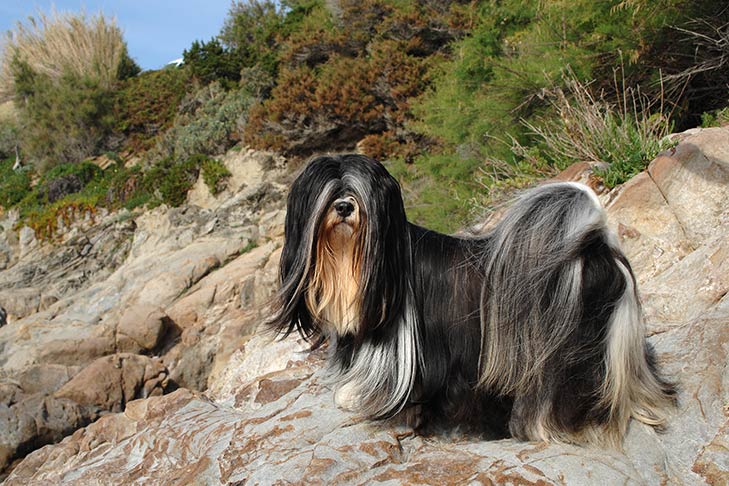The richly coated Lhasa Apso is a thousand-year-old breed that served as sentinels in Himalayan castles and monasteries. Lhasas are family comedians who are regally aloof with strangers. They are smart, confident, and sophisticated.
Lhasas are little but tough dogs with an aristocratic demeanor, standing less than a foot tall at the shoulder. They’re known for their floor-length, flat-hanging coat, which is separated in the middle and drapes down each side of the body. The Tibetan breeds have a fluffy tail that folds over the back. Fans of the breed believe the dark, oval-shaped eyes peering through lush facial hair are the portals to a Lhasa’s happy soul. The overall impression is clearly Asian: exotic, graceful, and serenely balanced.





 Health
Health Grooming
Grooming Exercise
Exercise Training
Training Nutrition
Nutrition